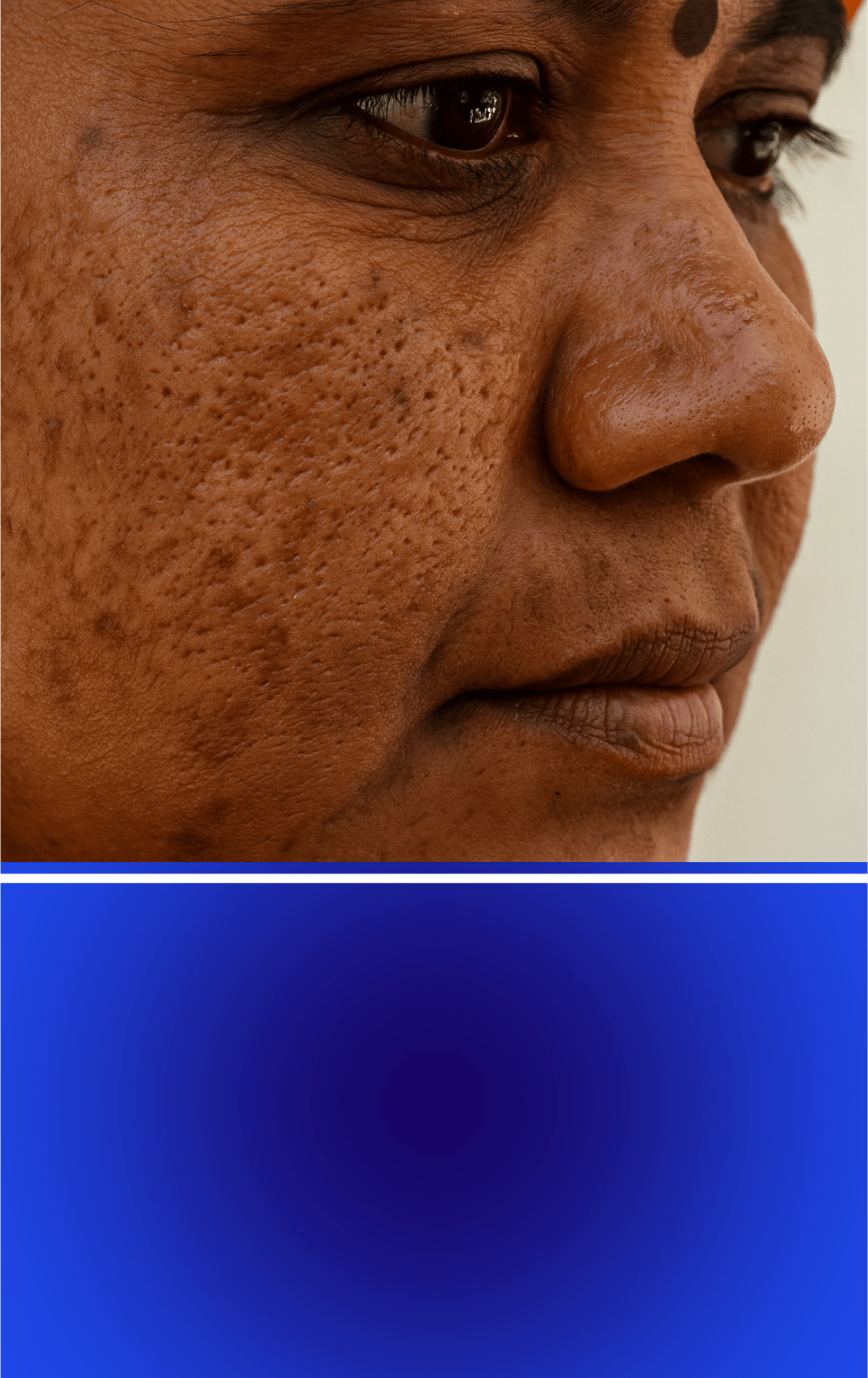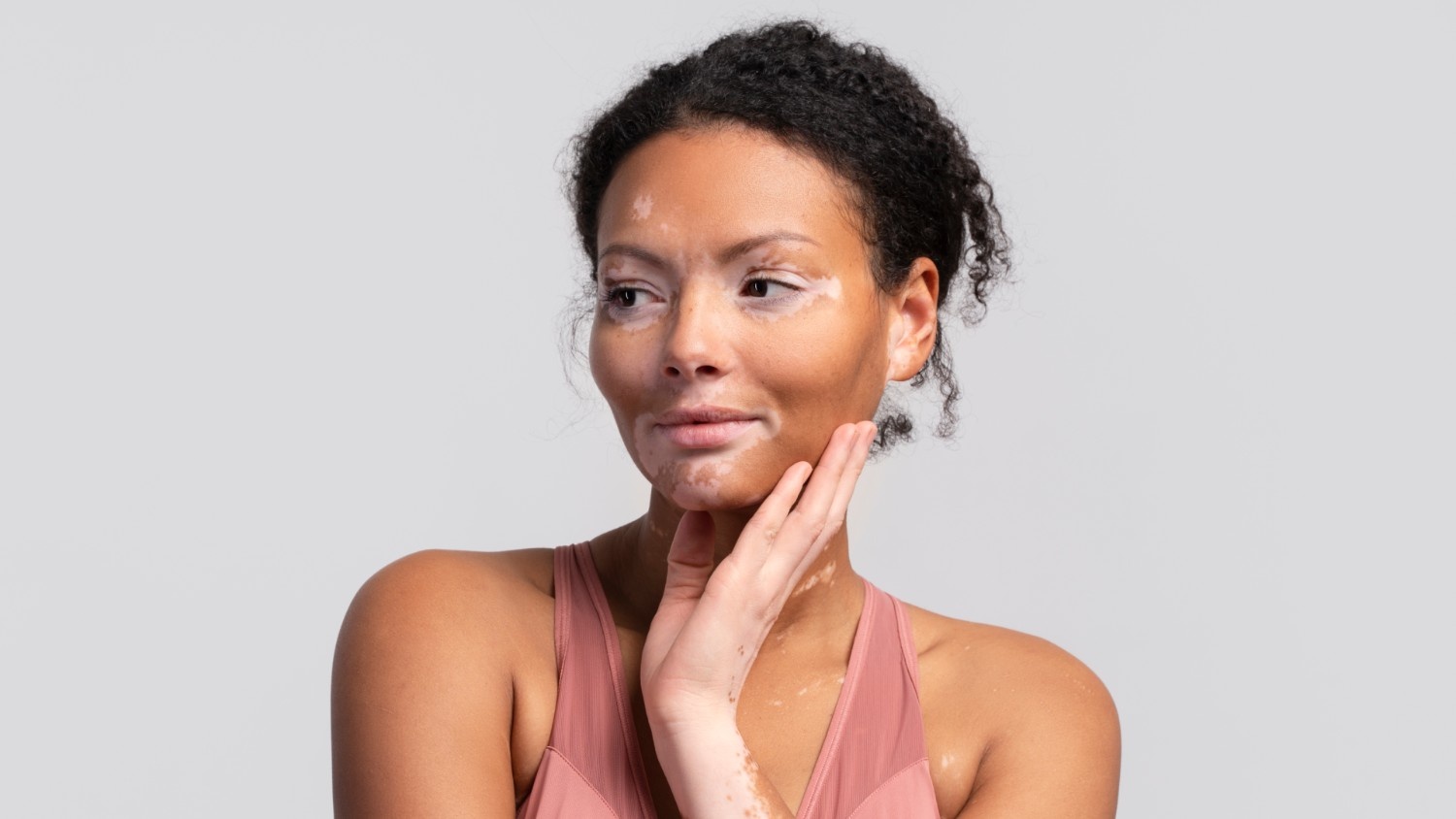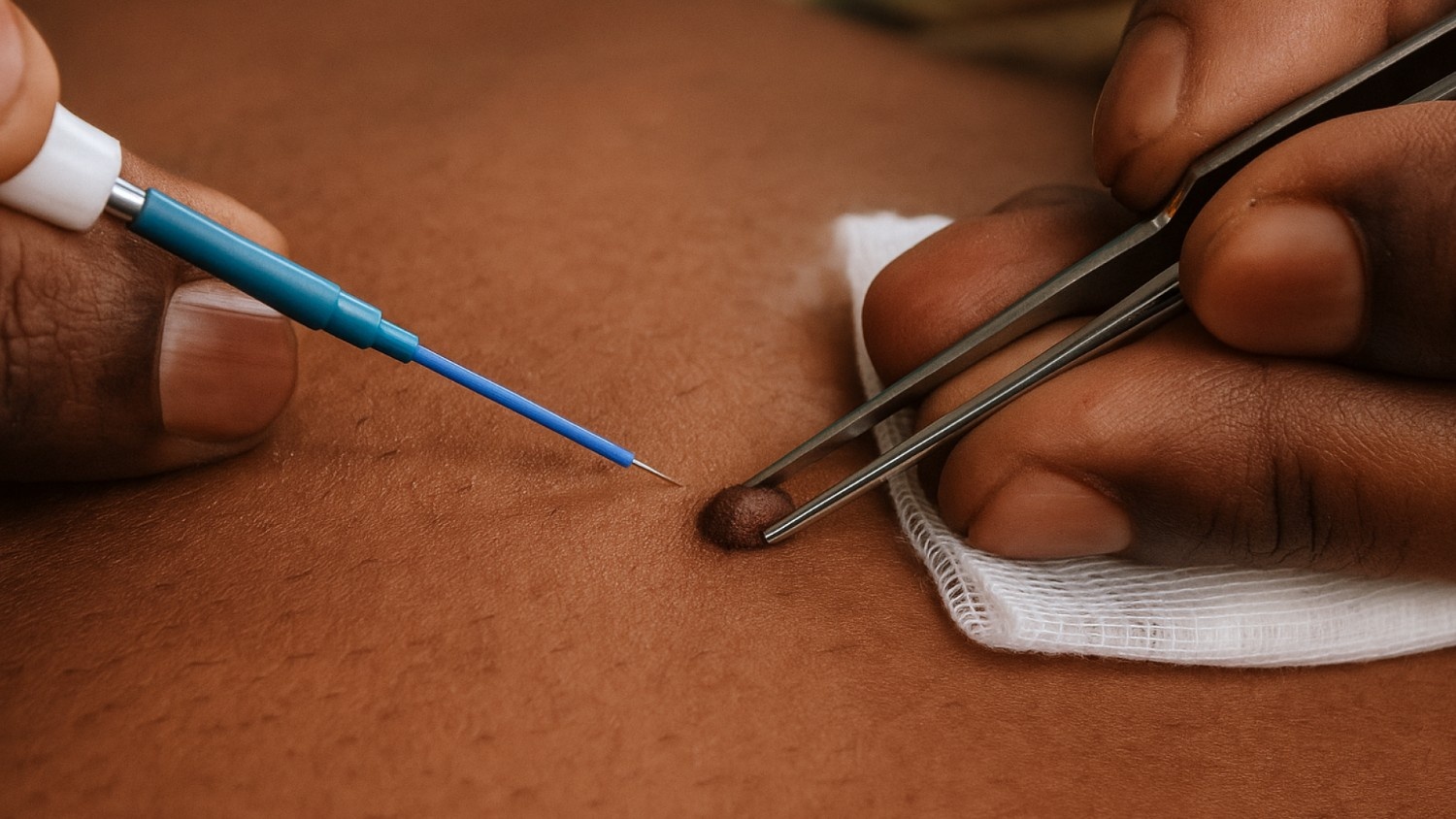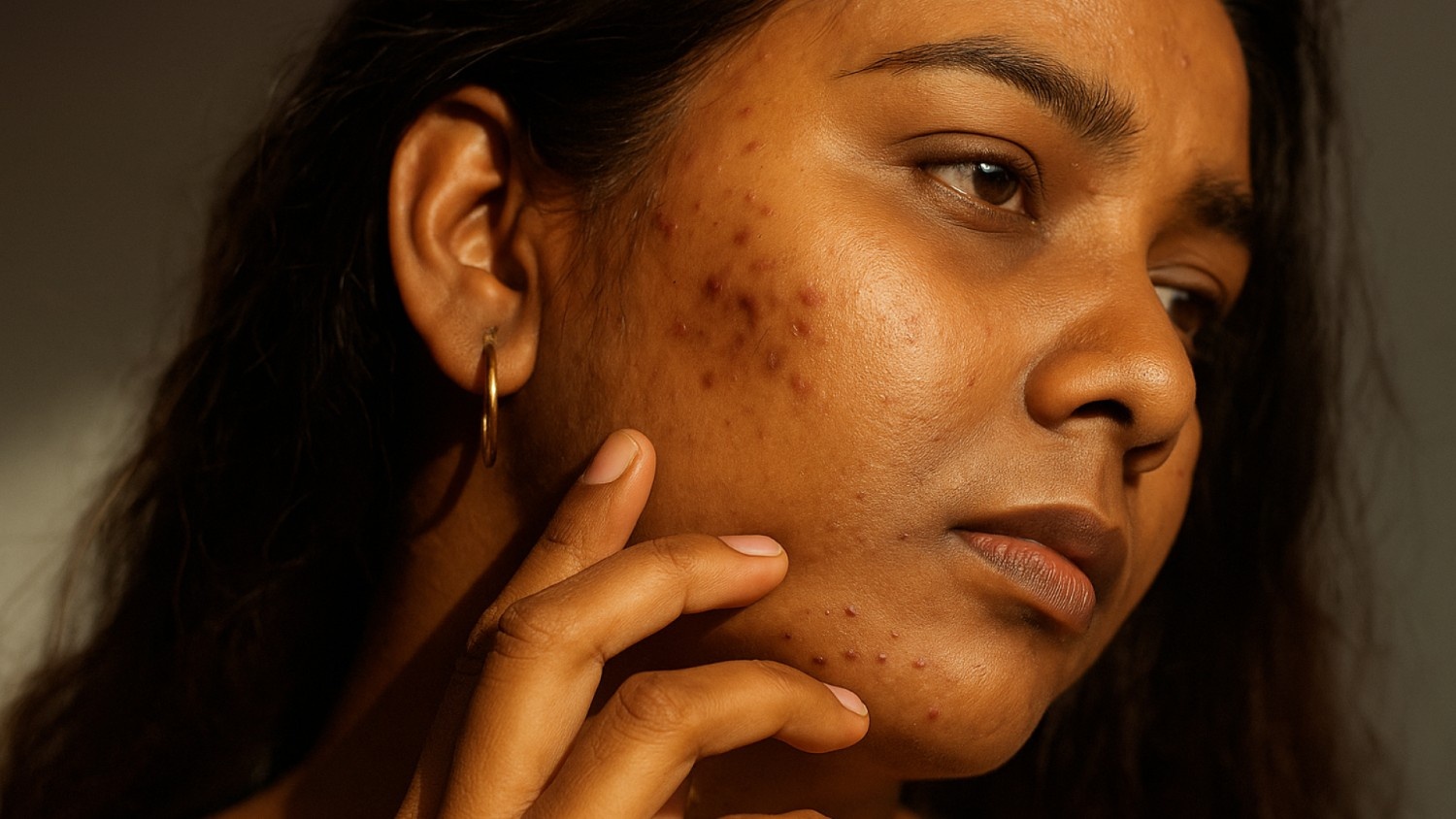Lichen Planus Pigmentosus is a rare, chronic dermatological condition characterised by the development of asymptomatic dark brown to slate-grey macules on the skin. While the condition is not life-threatening, it can lead to significant cosmetic concerns and has a profound impact on a patient’s quality of life.
Often affecting areas of the skin that are regularly exposed to friction, such as the face, neck, and upper limbs, LPP can be a persistent issue for those who develop it.
Unlike other pigmentary disorders, Lichen Planus Pigmentosus is more than just a cosmetic problem. It is an immune-mediated disorder, and understanding its pathophysiology, causes, and triggers is critical for developing effective treatments. The lesions that characterise LPP are often persistent, making early diagnosis and intervention essential to managing the condition and preventing further skin damage.
In this blog, we will learn the symptoms, causes, and treatment options for Lichen Planus Pigmentosus. We will explore its pathophysiology and the methods used by dermatologists to accurately diagnose and manage the condition.
Overview
- Lichen Planus Pigmentosus (LPP) is a rare skin condition characterised by persistent dark brown or slate-grey pigmentation, often appearing on the face, neck, and upper limbs.
- The condition is primarily asymptomatic, but mild itching may occur, and it can lead to cosmetic concerns.
- Common triggers include sun exposure, mustard oil, amla oil, henna hair dyes, and potential viral infections.
- LPP is diagnosed through clinical evaluation, dermoscopy, and biopsy, with features like interface dermatitis and vacuolar changes visible under a microscope.
- Treatment options include topical creams (tacrolimus, ruxolitinib), systemic medications (oral tranexamic acid, isotretinoin), and combination therapies (lasers and chemical peels).
Symptoms of Lichen Planus Pigmentosus
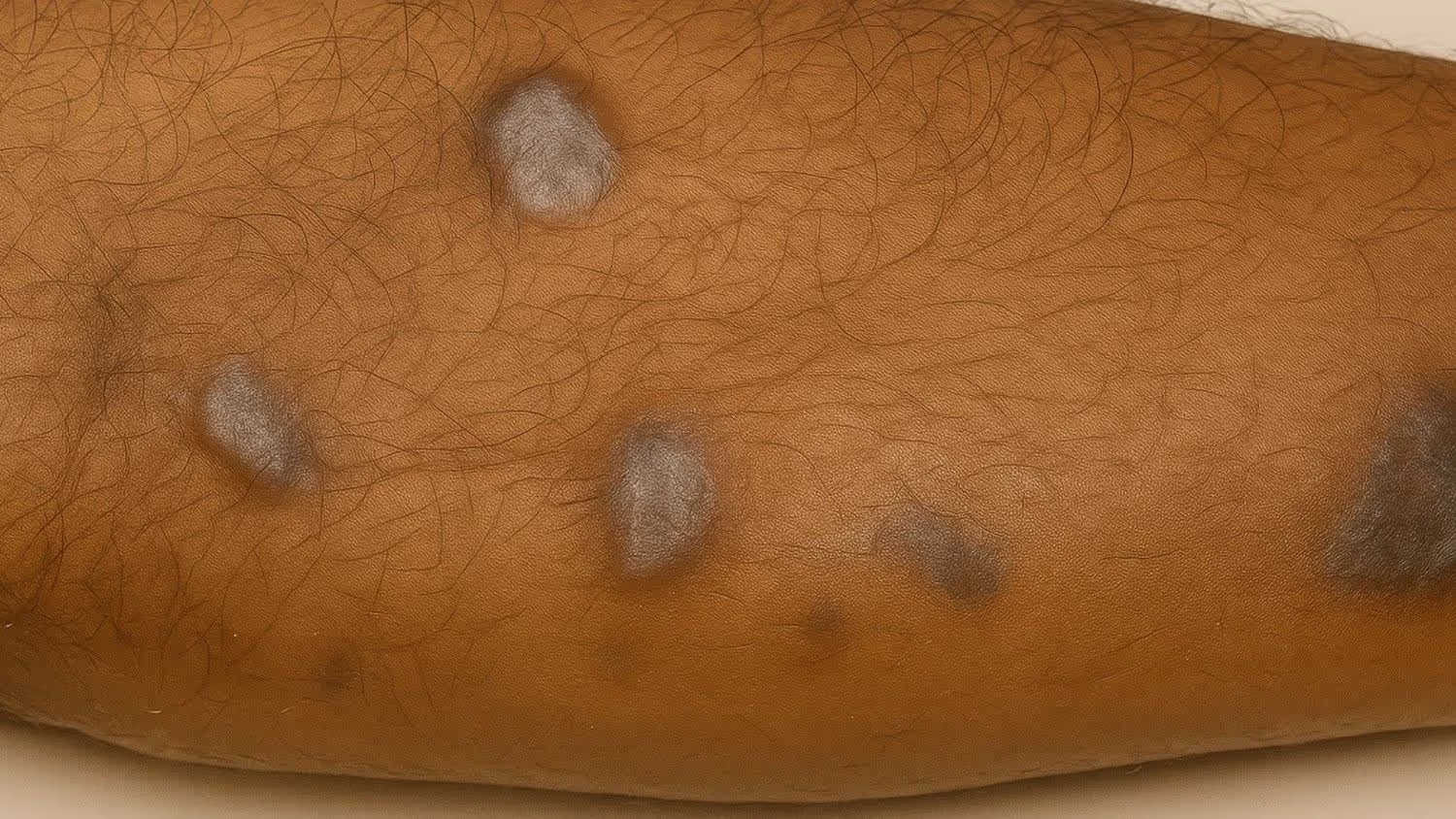
Lichen Planus Pigmentosus, or LPP, is a rare variant of lichen planus, a chronic inflammatory skin condition characterised by the presence of hyperpigmented, irregular lesions. While LPP is primarily noted for its pigmentary changes, it can have a significant impact on a person’s appearance and quality of life. The symptoms associated with Lichen Planus Pigmentosus can vary but are typically consistent in terms of their appearance and progression.
1. Persistent and Asymptomatic Slaty-Gray Pigmentation
One of the hallmark features of LPP is the persistent pigmentation that often appears as dark, slate-gray spots on the skin. Unlike other skin conditions, the pigmentation in LPP is typically asymptomatic, meaning it doesn’t cause pain or itching for most patients. However, the cosmetic appearance of the lesions can be distressing, particularly when they appear on visible areas of the body, such as the face and neck.
2. Dark Brown or Slate Grey Macules
The pigmentation from Lichen Planus Pigmentosus usually manifests as dark brown or slate-grey macules (flat spots) that may coalesce to form larger patches. These macules are typically well-demarcated but may have irregular borders, which adds to their distinct appearance.
3. Mildly Pruritic Lesions
While LPP is often asymptomatic, some patients may experience mild itching or pruritus in the affected areas. This is generally not severe and may only occur intermittently. The presence of pruritus in LPP differentiates it from some other pigmentary disorders, though it is not a defining characteristic of the condition.
4. Generally Affects the Face, Neck, Upper Limbs, and Intertriginous Areas
LPP typically affects areas of the skin that are regularly exposed to friction, such as the face, neck, upper limbs, and intertriginous areas (folds of the skin, such as the armpits and groin). These regions are often more susceptible to the inflammatory processes that cause pigmentation in LPP.
Understanding which areas of the body are most commonly affected can help patients and clinicians better identify and manage the condition.
Also Read: What are Pigmentary Conditions?
If you have noticed dark spots on your skin or suspect you might have Lichen Planus Pigmentosus, it is essential to seek evaluation by a dermatologist for proper diagnosis and treatment. Contact Velantis Dermatology today to schedule your consultation with MD Dermatologist, Dr. Janani Sree C M.
Risk Factors Of LLP
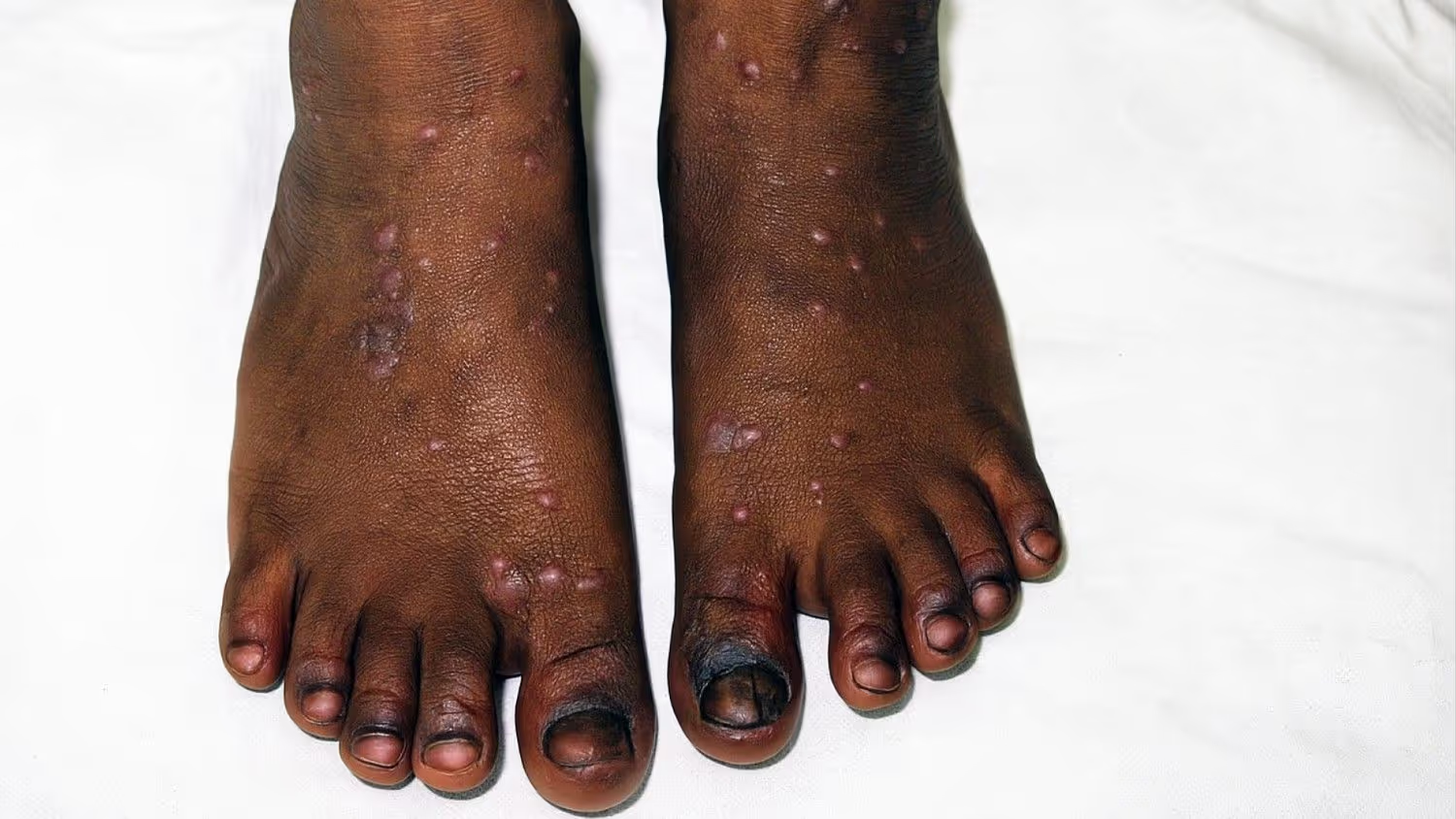
The exact cause of Lichen Planus Pigmentosus is still not fully understood. However, researchers have identified several key risk factors and potential triggers that play a role in the development and exacerbation of the condition.
Hypersensitivity Reaction Due to Type IV Hypersensitivity
Lichen Planus Pigmentosus is believed to result from a hypersensitivity reaction, particularly Type IV hypersensitivity. This immune response occurs when the immune system reacts abnormally to certain environmental stimuli, causing inflammation and the production of hyperpigmented lesions. The immune system’s response to various triggers, such as allergens, may contribute to the condition’s onset.
Potential Triggers Include Sun Exposure, Mustard Oil, Amla Oil, and Henna Hair Dyes
Several factors can trigger or exacerbate LPP. Sun exposure is one of the most significant triggers, as UV radiation can provoke inflammation in the skin and lead to the development of pigmentary changes. Additionally, common household products like mustard oil, amla oil (used in hair and skincare), and henna hair dyes have been identified as potential irritants that may cause or worsen LPP. These substances can irritate the skin and induce inflammatory responses in susceptible individuals.
Possible Association with Viral Infections
There may also be an association between viral infections and the development of LPP. Certain viral infections, including those caused by the hepatitis C virus, have been linked to an increased risk of LPP, though more research is needed to fully understand this connection. In some cases, LPP can appear as a cutaneous manifestation of these underlying viral infections.
Genetic Predispositions Common in Certain Populations
Genetic factors also play a role in the development of Lichen Planus Pigmentosus. The condition is more prevalent in certain populations, particularly those of South Asian descent, which suggests a genetic predisposition. While LPP can affect people of any age or ethnicity, individuals with a family history of lichen planus or related autoimmune conditions may be at higher risk.
If you suspect you may be at risk for LPP due to any of these triggers or genetic factors, Dr. Janani Sree C M at Velantis Dermatology can help you determine the cause of your symptoms and recommend an effective treatment plan.
Underlying Pathophysiology of LPP
Understanding the underlying pathophysiology of Lichen Planus Pigmentosus is essential for developing effective treatments and managing the condition. The pathogenesis of LPP involves immune-mediated processes that lead to inflammation and pigmentation changes.
Interface Dermatitis Observed in Affected Areas
One of the key features of LPP at the microscopic level is interface dermatitis, which is an inflammatory condition that occurs at the junction between the epidermis (outer layer of skin) and the dermis (underlying layer). This results in inflammation that disrupts the skin’s normal structure, causing damage to the melanin-producing cells, leading to hyperpigmentation in the affected areas.
Role of JAK-Signalling in Inflammation and Pigmentation
Recent research has highlighted the role of JAK (Janus kinase) signalling in the inflammation and pigmentation processes of LPP. JAK signalling pathways are involved in regulating immune responses, and their activation can exacerbate the inflammatory process, leading to the development of pigmented lesions. This understanding has paved the way for targeted therapies that block JAK signalling to reduce inflammation and pigment formation.
Histological Features
From a histological standpoint, LPP is characterised by several key features, including the lichenoid interface reaction, which involves immune cells attacking the skin at the junction between the epidermis and dermis. Additionally, vacuolar changes in the skin cells and apoptosis (programmed cell death) of keratinocytes contribute to the formation of dark pigmentation in the affected areas. These features are crucial for diagnosing and understanding LPP at the cellular level.
Diagnosis of LPP.
Diagnosing Lichen Planus Pigmentosus involves a combination of clinical evaluation, dermoscopy, and histopathology. Let’s take a closer look at the diagnostic approach.
Clinical Presentation and Histopathology
LPP is primarily diagnosed based on its characteristic clinical presentation—persistent slate-gray pigmentation in certain areas of the skin, particularly the face, neck, and upper limbs. A biopsy is often performed to confirm the diagnosis, as histopathology can reveal key features of the condition, such as interface dermatitis and vacuolar changes in the skin cells.
Dermoscopy
Dermoscopy is a non-invasive imaging technique that allows the dermatologist to examine the skin’s surface more closely. In the case of LPP, dermoscopy typically reveals diffuse, dotted, and mixed pigmentation patterns, which help differentiate it from other skin conditions that might look similar. The use of dermoscopy can aid in more accurate diagnosis and provide additional insights into the condition’s severity and progression.
Differential Diagnosis
LPP can sometimes be confused with other skin conditions that cause pigmentation changes, such as erythema dyschromicum perstans (a condition characterised by grayish-brown pigmentation) or pigmented contact dermatitis. A thorough examination and histopathological testing are essential to distinguish between these conditions and ensure an accurate diagnosis.
Treatment Options
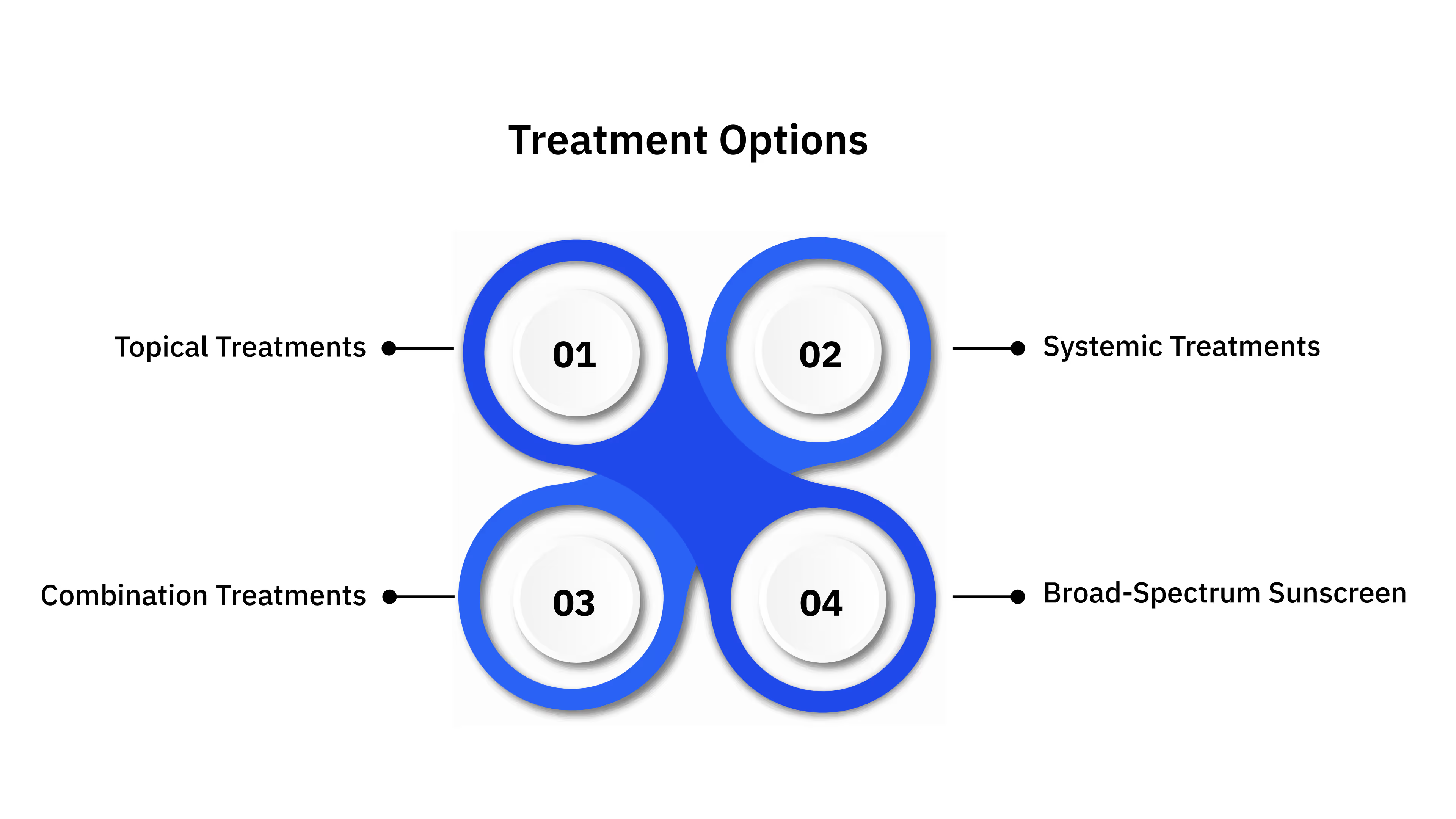
Although there is no one-size-fits-all solution for treating Lichen Planus Pigmentosus, several treatment options can help manage the symptoms and reduce pigmentation. The choice of treatment depends on the severity of the condition and how it affects the patient’s quality of life.
Topical Treatments
Topical treatments are often the first line of defence against LPP. Tacrolimus and ruxolitinib creams have shown promising results in reducing inflammation and pigmentation associated with LPP. These creams work by modulating the immune response in the affected areas, which can help reduce the size and severity of the lesions over time.
Systemic Treatments
For more severe cases of LPP, systemic treatments may be necessary. Oral tranexamic acid, which helps reduce the production of melanin, has been shown to be effective in treating LPP-related hyperpigmentation. Additionally, isotretinoin, a medication commonly used for acne, can also help reduce inflammation and promote skin cell turnover, leading to improved skin appearance.
Combination Treatments
Combination treatments that involve lasers and chemical peels are also showing positive outcomes for LPP patients. Nd:YAG lasers can target deep layers of skin to break down pigment and promote even skin tone, while phenol chemical peels can exfoliate the skin, helping to fade hyperpigmentation. These treatments are typically used in conjunction with other therapies for enhanced results.
For a detailed examination and to discuss personalised treatment options, schedule a consultation with Dr. Janani Sree C M at Velantis Dermatology. Our expert team is here to help you understand the condition and its underlying causes.
Broad-Spectrum Sunscreen
Because sun exposure is a known trigger for LPP, it is essential for patients to use broad-spectrum sunscreen daily. Sunscreen helps prevent further exacerbation of pigmentation and protects the skin from harmful UV rays that can worsen the condition.
Also Read: Cryotherapy for Warts
Treatment Challenges and Outcomes
While various treatment options are available, it’s important to acknowledge that Lichen Planus Pigmentosus is a challenging condition to manage, and treatment outcomes can vary.
No Single Effective Therapy
The effectiveness of treatments for LPP can vary significantly from patient to patient. Some individuals may experience significant improvements, while others may have limited success. There is currently no single treatment that works for all patients, which makes personalised care and close monitoring essential.
Deep Dermal Melanophages Hindering Treatment Efficacy
One of the key challenges in treating LPP is the presence of deep dermal melanophages, cells that store melanin in the deeper layers of the skin. These melanophages can make it difficult for treatments to penetrate deep enough to fully address the pigmentation, limiting the effectiveness of some therapies.
Spontaneous Resolution Vs Persistent Pigmentation
Interestingly, some patients with LPP may experience spontaneous resolution, with the pigmentation fading over time without any treatment. However, for many others, the pigmentation can persist for years, making it necessary to rely on ongoing treatments and skin care.
Research and Future Directions
There is still much to learn about Lichen Planus Pigmentosus, particularly regarding effective treatment strategies and the underlying mechanisms that drive the condition.
While several treatments show promise, further clinical trials are needed to identify the most effective regimens for treating LPP. These trials will provide the evidence necessary to guide dermatologists in selecting the best treatments for their patients.
Prospective studies are crucial to assess the safety and efficacy of new treatments. As new therapies emerge, it is essential to determine how they work in real-world settings and how they can benefit patients with LPP.
A better understanding of the pathophysiology of LPP will play a critical role in improving treatment strategies. By identifying the specific immune mechanisms involved in the development of LPP, researchers can develop targeted therapies that are more effective and have fewer side effects.
Conclusion
Lichen Planus Pigmentosus is a challenging hyperpigmentary disorder that affects the skin and can have a significant impact on a person’s appearance.
While treatments are available, the outcomes can vary. Ongoing research into the condition’s pathophysiology and treatment options is crucial for developing more effective therapies.
If you are dealing with Lichen Planus Pigmentosus, Velantis Dermatology is here to help. Contact Dr. Janani Sree C M today for a personalised consultation and treatment plan personalised to your needs.
FAQs
Q1. What are the common symptoms of Lichen Planus Pigmentosus?
A1. Common symptoms of LPP include slaty-gray pigmentation, dark brown or slate-grey macules, and mildly pruritic (itchy) lesions, usually affecting the face, neck, upper limbs, and intertriginous areas.
Q2. Can Lichen Planus Pigmentosus be cured?
A2. While there is no definitive cure for LPP, various treatments like topical creams, oral medications, and combination therapies with lasers can help manage the condition and improve pigmentation.
Q3. Is Lichen Planus Pigmentosus caused by sun exposure?
A3. Yes, sun exposure is one of the primary triggers for LPP. Protecting the skin from UV rays with sunscreen can help prevent exacerbation of pigmentation.
Q4. How long does it take to treat Lichen Planus Pigmentosus?
A4. Treatment duration varies based on the individual and the method used. Some patients experience improvement in a few months, while others may require long-term treatment.
Q5. Is Lichen Planus Pigmentosus a sign of a serious health condition?
A5. LPP is generally not a serious health concern, but in some cases, it may be associated with underlying conditions like viral infections or autoimmune disorders. It’s essential to seek professional evaluation to rule out any potential health risks.


.png)
